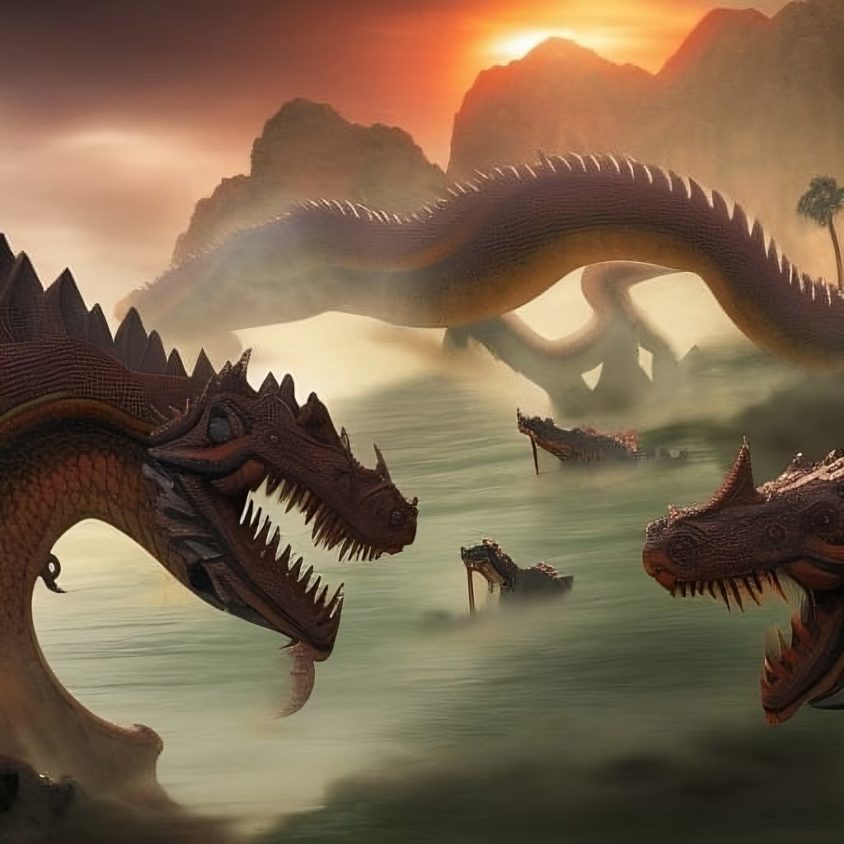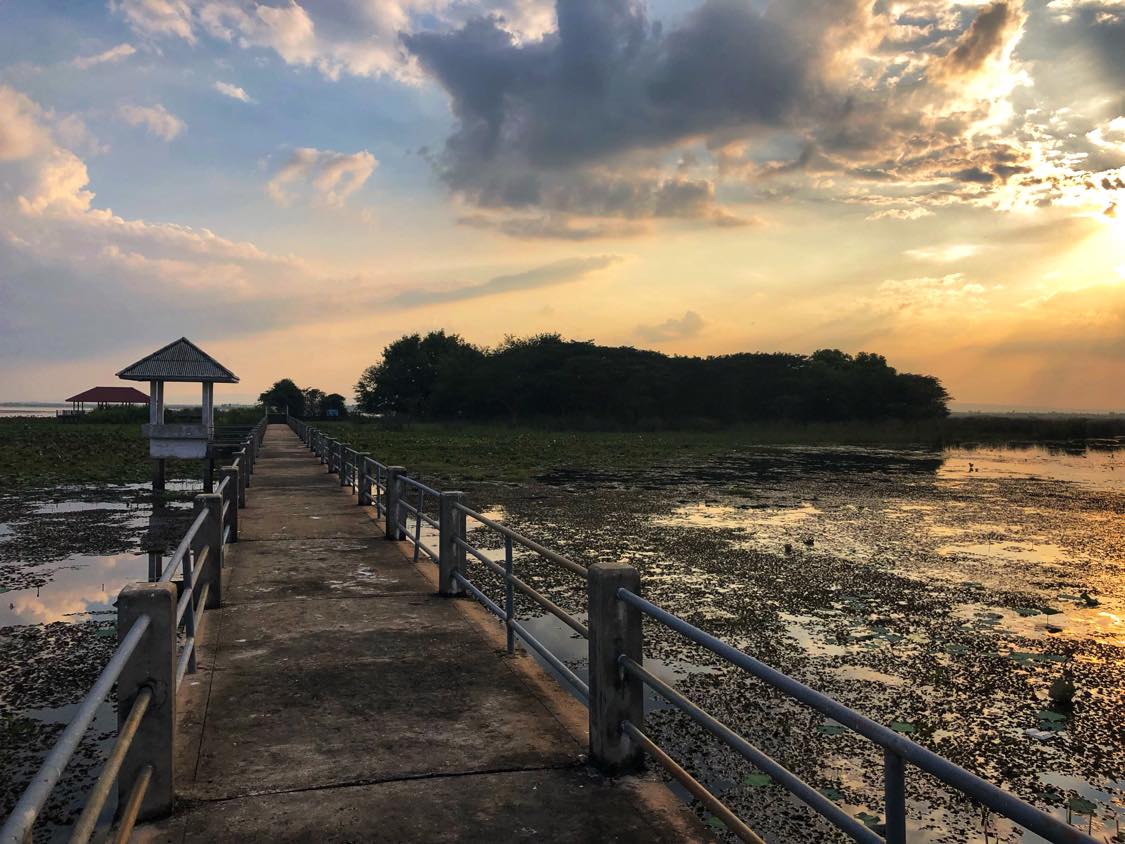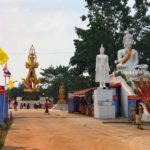
The Naga Legend of Nong Han Lake in Thailand

Mystical Thailand is filled with myths and legends, many of which have never been translated into English and remain unknown to the outside world. Today, we will share one such Sakon Nakhon legend, which is being translated into English here for the first time. It’s a story about an ancient city that now lay buried beneath Nong Han Lake, the largest freshwater lake in Northeast Thailand.
The legend of “Mueang Nong Han” (เมืองหนองหาร) or Nong Han City is recorded in old Isaan folk literature. While some say that the story is just a fanciful tale. Others insist that the legend is real, with residents who live on the edge of lake stating they have had strange dreams of the submerged city (before ever having heard of the legend).
The ancient city was known as Ek Thee Ta (เอกธีตา), and it owes its destruction to a tragic love story that involved one woman and two men. At the time, the area around Nong Han was ruled over by a Khmer Governor with a beautiful daughter named “Nang Ai Kham” (นางไอ่คำ). She was known for her stunning beauty from an early age.
Many young men from different cities wished to marry the beautiful Nang Ai Kham. Among those who fell in love with her were the handsome “Thao Pha Daeng (ท้าวผาแดง),” a prince from Pha Phong City, and “Thao Pankee (ท้าวภังคี),” the son of Phaya Suthonakharat (พญาสุทโธนาคราช), the Naga ruler of the underworld. Nagas are a race of half-human, half-serpent beings that often are depicted as full serpents or dragons at Thai temples.
Thao Pha Daeng was the first of the two suitors to fall in love with Nong Ai Kham. And she also fell in love with him. Her father, the Governor, promised to allow the marriage if Thao Pha Daeng could win an upcoming rocket competition, which today is referred to as the Boon Bang Fai (บุญบั้งไฟ) rocket festival. Thao Pankee, the Naga, heard of the competition and went to the city to watch. On seeing Nang Ai Kham, he immediately fell in love.

Thao Pha Daeng’s rockets unfortunately failed to launched, and burned up on the ground in a black rubble. Seeing an opportunity, Thao Pankee transformed himself from a serpent into a white squirrel wearing a melodious bell around his neck. His plan was to attract the love and attention of Nang Ai Kham, allow her to capture him, and then transform himself back into a Naga to take her to the netherworld.
His plan worked well at first, with the young lady falling in love with the white squirrel she saw dancing on the branches of a tree outside her castle bedroom. Nang Ai Kham sent a group of hunters to catch the squirrel, and this is when everything fell apart. Instead of catching him without harm, the hunters accidentally killed him with a crossbow.
Before dying, Thao Pankee, in the form of the white squirrel, prayed generously, “May my meat be delicious and sufficient to feed the whole city.” Following his death, the townspeople distributed squirrel meat to eat, and it miraculously multiplied until it was able to feed everyone — except for the widows who refused the meat, believing it to be unlucky.
When the Naga King learned that his son had been murdered, he became furious and gathered an army of tens of thousands to attack the city of Ek Thee Ta. Whoever ate the meat of the white squirrel was destined to die. The Naga serpent army immediately marched towards the Khmer city.
During the dark of that night, the sky was filled with thunderstorms and heavy rain. Lightning struck relentlessly, and the land began to collapse gradually. Amidst the screams of fleeing people, tens of thousands of serpents emerged, destroying the city and causing it to sink into the depths.
Pha Daeng, and a large entourage, were able to rescue Nang Ai Kham from her sinking castle. However, no matter how fast their horses galloped, they couldn’t escape the Naga army that caused the land to collapse. Thao Pha Daeng and Nang Ai Kham sank beneath the ground.
The once prosperous city of Ek Thee Ta disappeared completely by dawn. As far as the eye could see, it was only a vast expanse of water. All life in Ek Thee Ta City had been swallowed by the depths, except for the widows who had not consumed the white squirrel meat. They remained on 3 or 4 small deserted islands, which you can still see today on Nong Han Lake in Sakon Nakhon, Thailand.
- The Hidden Dharma of Thai Language & Culture - May 11, 2024
- The Royal Ploughing Ceremony in Thailand – A History - May 8, 2024
- Dying Well the Buddhist Way in Thailand - May 7, 2024




